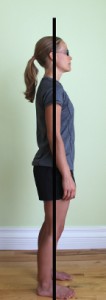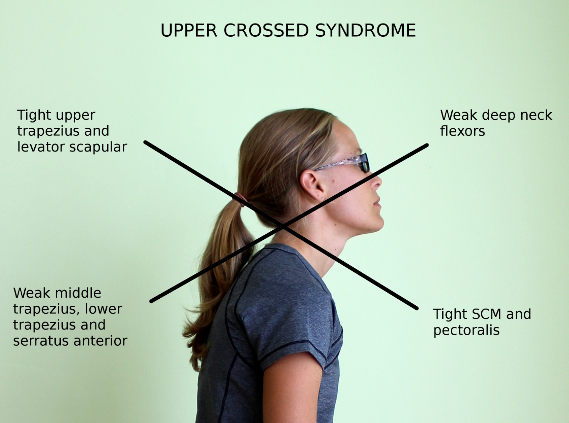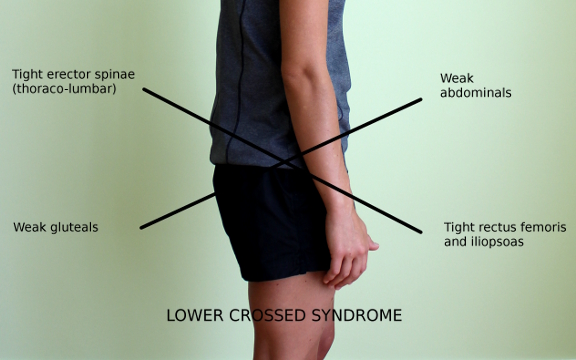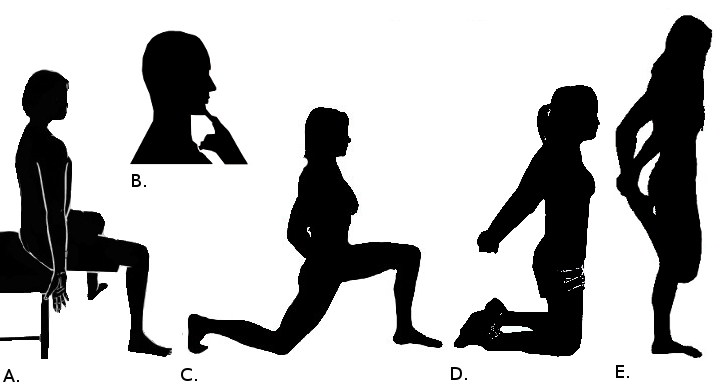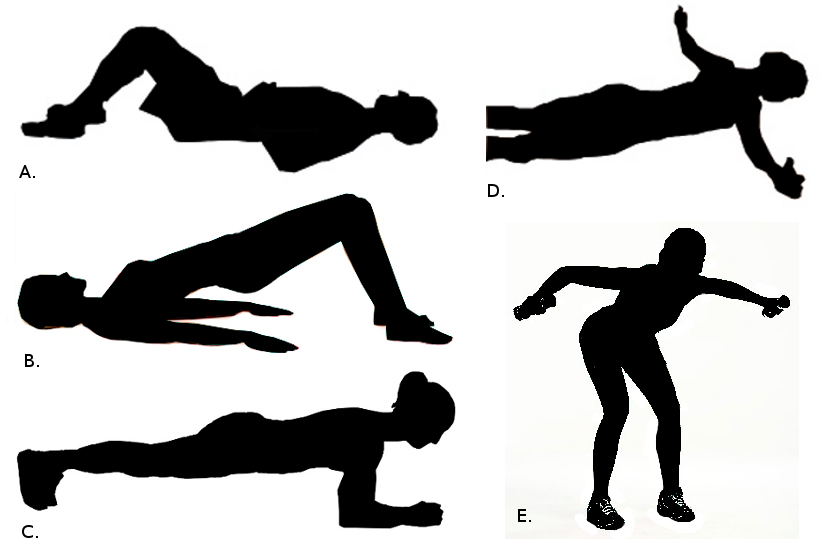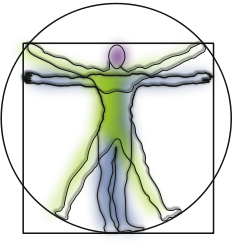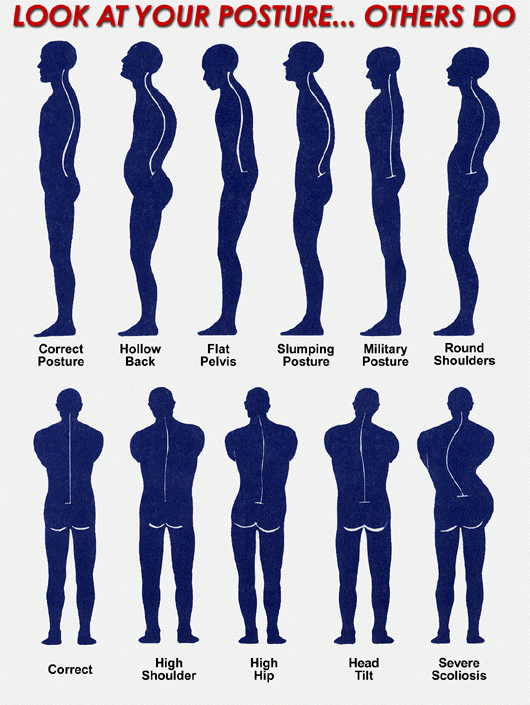 This is a beautiful, inspirational story written by BJ Palmer, son of DD Palmer (the founder of chiropractic). Anyone who needs a little pick-me-up (or a kick in the butt) read on…
This is a beautiful, inspirational story written by BJ Palmer, son of DD Palmer (the founder of chiropractic). Anyone who needs a little pick-me-up (or a kick in the butt) read on…
~~~~~~~~~~~~~~~~~~~~~~~~~~~~~~~~
Then Randolph turned to me. “Man, write that story you’ve told us. Write it so that every man may read. Send that message out into the world. If men will read that story, read and re-read, until it is written on their memories, if men will believe the message you bring, and then if they will but awaken that something within their souls that now lies asleep—I say if you can make men do this, you will have done more for mankind than any man or any thousand men have done in many, many years. Write it, man, write it word for word as you have told it here, so every man may read. Write it, man, write it.” And so it has been written.
This happened a long, long time ago. I never see a man limp without thinking of that day. The sky wept. No rift of brighter color broke the drabness of it. I thought the universe wept. That was my outlook. The very times were in misery. Men were out of work. I was one of them. I had slept the night before on the cold, cement floor of the city’s jail. I slept as a tired dog sleeps, a dog worn out with a fruitless chase. All of the night before, I had walked, walked, walked—my pride keeping me from this place. And so the day had found me walking, aimlessly, looking only for food, shelter and work. This could not last forever, so that night I had stumbled down the low, narrow hallway of the jail, and been let into a barred cell with a hundred others. And there I had lain as one dead, on the cold, hard floor. But it is of the day that followed that night in jail that you shall hear. For that was the day of my life. It was then I found “That Something.”
My feet were very tired. My soul wept with the sky. I stood, as in a wilderness alone, on the corner of a great thoroughfare in a great city. And then a man stopped by my side. He was of my height and build. I caught a glimpse of his face. I thought that this man might have been myself, if…
But my present need drove out reflections. I laid my hand on his arm. “I am hungry,” I said simply.
He turned slowly and looked at me. First his gaze took in every detail of the outer man, from my water-soaked cap to my poor, cracked shoes. And then, through my eyes, he seemed to search my soul.
I stood there ashamed. I laugh when I think of that now, but it was different then.
“Well,” he said presently, “suppose you were fed. What then?” I shifted my weight from one tired foot to the other. “I’d try to get a job somewhere,” I muttered after a moment. “You’d try?” he asked. “Yes, try,” I answered, “although there is little chance. Nobody wants men now. I’ll try, sir. But I don’t care for that now—it’s food I want. I’m hungry, Can you help me?”
“No,” he answered, a note of pity in his voice. “I cannot help you. No man can.” “But you could feed me,” I said, with some petulance in my voice. “It is not food you need!” “What then?” I asked. “That Something,” was his reply.
A man joined him. They began talking of matters of mutual interest. I was shuffling away through the drizzling, miserable rain, when he called me back and handed me his card. “Man, go find ‘That Something’,” he said, “and when you’ve found it, come to me.” Come to you for what?” I asked. “To thank me,” was his answer, and he and his friend passed on.
There were two words that stuck in my memory. “That Something!” I fell to wondering. I turned into a pool room, and found a seat. I sat there thinking. The balls on the tables before me clicked nickels away from men who could ill afford the pleasures of the place. I sat there a long, long time. There was nowhere else to go.
Ahead of me I saw another night in jail. Yet the day seemed longer than the night. It was warm in there. The hum of voices, the regular click, click, click of ivory, the occasional thumping of cue on marble floor—all this in time developed into a dull chorus of monotony. And then I fell asleep.
I believe in God. I believe in miracles. I believe in visions as well. But it is only natural that I should have dreamed of “That Something”—so perhaps it was neither miracle nor vision.
You will think it a foolish dream; yet it changed my life. That’s reason enough for the telling. You may laugh at it scornfully; then my dream will do you no good. You may see in it what I saw; then you will take your place with the masters of men.
This was my dream: I dreamed that I awoke! That is the most wonderful part of the dream; for in my dream I realized that I had been asleep—a long, long sleep from the very beginning of things—and I saw myself, there in the pool room, asleep. Then I saw myself start, my eyes opened, and I dreamed that I saw.
“What awakened me?” I asked in my dream. “You awakened yourself,” answered a voice nearby. I turned about, but no one was near. “Who are you?” I asked. “I am ‘That Something’,” came the reply. “But where are you?” “I am hidden in your soul.”
For some moments I thought over what was said. Then I stammered, “How—how did you get there?” “I was born there.” “Why have I not known you were there before?” “No man knows it,” answered the voice, “until he awakes.” “Are you in other men’s souls, as well?” “There is ‘That Something’in every man’s soul, which can move the mountains or dry the seas.” “Then you must be Faith!” “Yes,” came the answer, “I am Faith, but I am more—I am that which makes men face the fires of hell, and win.” “Then you must be Confidence, as well.” “Yes, I am more than Confidence—I am that which makes the babbling brooks lift worlds upon their wavelets.” “You are Power,” I cried. “Yes, I am more than Power,” answered the voice. “I am that which makes the wretched failure lift up himself and rule the world.” “You are Ambition—I know you now.” “Yes, I am all you say—Faith, Confidence, Power, Ambition, and more. For greater than all is ‘That Something.’ I am that which every man must find in his soul or else he will be but a clutterer of the earth on which he lives.”
“But how can man find you?” “Even as you are finding me now. First you must awaken, then seek, and when you have found you must learn to control . . .” “Control what?” I asked, confused. “‘That Something’ . . . borrow it from your soul and baptize your life with it. Anoint your eyes, that you may see; anoint your ears, that you may hear; anoint your heart, that you may be!” “But tell me,” I cried frantically, for the voice was trailing off to almost nothing, “how can I do this? How? How?”
“This is the secret,” came the voice to me as the whisper of a gentle breeze, “these words—‘I will’.”
And then I awoke with a start. A man was shaking me roughly. “Clear out of here! We ain’t running no free rooming house for bums. If you want to sleep, take a sleeper, but get out of here.” “I will,” I answered unthinkingly, as I turned towards the door. “I will.”
My words brought back the dream vividly. I stood in the doorway, peering out into the rain. A boy with a dozen bundles stopped near me to shift his load. “I’ll help you, son,” I said, and laughed gladly as I took half his load and started with him down the street. “Gee, mister, cat’s pretty square of you, all right. How far are you going this way?” “Where are you taking these things?” I asked. He told me. “Why, that’s right where I’m going” I answered in mock surprise. And so we hurried on our way.
It was then the clouds overhead began to break. Before we had gone half way, the sun peeped out and the boy laughed with the pure delight of it. “By golly, mister, she’s going to be some handsome day tomorrow, ain’t it?” “I will,” I answered absently. He looked up at me, startled by my answer, started to ask a question, thought better of it, and, giving me another queer look, trudged on in silence.
When he had delivered his packages, he turned back towards the thoroughfare; and he asked me, with the innocent impertinence of boyhood: Say, mister, where do you work?” “Why, I’m working for you right now. It’s good to work, don’t you think?” “But ain’t you got no steady job?” “Yes,” I answered firmly, “I will.” Again he cast a queer look and quickened his pace.
We went together to the store at which he worked, It was the largest in the city. We hurried through a doorway at the rear, and I found myself in a large room. A man stepped up to me and asked what I wanted. “I have come here to work.” “What department? Who sent you?”
There were many men in there, packing boxes. Before I could answer his question, someone called him and he hurried away. I took off my coat, hung it on a nail, and started to work, following the example of those near me. A half hour later, the man who first accosted me passed. “Oh,” he said, “so they put you at it while I was gone, did they?” “I’m doing my best, sir,” I answered as I drove a nail with a bang.
And so I worked until six o’clock. The sun was very bright outside. When the six o’clock bell rang, the men began filing by the clock. “What about the clock?” I asked the man in charge. “Didn’t they give you a number?” “No.” Then I told him my name, he gave me a number, and I punched out.
The boy was waiting for me at the door. “How’d you get the job?” he asked curiously. “That was secured for me before I showed up there.” “Who got it for you?” “‘That Something’,” was my answer. “Aw, quit stringing me. How’d you get on? I seen a dozen men trying to get in on that work this morning and they was all turned down.” “But,” I explained with a smile, “they had never found ‘That Something’.” He again favored me with a queer look.
“Where do you live?” he asked finally. “I am going to find a place now.” “Well, my maw keeps a boarding house—why don’t you come up to my place?”
There was but one other boarder. He was a professor of a number of ology branches at a nearby denominational college. He was a little man, with unreasonable hair on his face and very little on his head. He wore thick glasses perched on a beaked nose. His eyes were small and black like shoe buttons. He watched me as I ate. When the meal was finished, he invited me to sit with him in his room.
“I hope you don’t mind my prying,” said he, “but I have been trying to figure you out.” “Yes?” “I have come to the conclusion that you are a student of sociology.” I laughed. “Bobby tells us you are packing boxes down at his store.” I nodded assent. “Then of course it is for the study of the conditions of the working masses that you are down there.” “Yes,” I admitted, “I am very much interested in conditions of the masses right now.” “Then you can help me; I am writing a series of papers on that very subject. Will you answer me this, please. What is it that keeps the underdog down? What is it that the upper ten possess that the under ten thousand do not have?” “Why, it’s ‘That Something’,” I answered. “What do you mean? Education? Environment?”
Before my mind was flashed the picture of my boyhood. I saw my room on the top floor of a city block building. I saw myself sleeping in dry-goods boxes in alleys, and by the boilers in boats on the river. Yes, I was an alley-cat and a wharf-rat. I saw myself placed at the mercy of five stepmothers and a father engrossed in his science. I saw myself working, gaining little or no schooling. And then, in the twinkling of an eye, the scene changed and I saw that awful room, with a hundred men lying around me on the cold, hard floor.
“No,” I answered thoughtfully, “it is neither of those things. ‘That Something’ is entirely different. I don’t know just what it is, but I am going to find it, pin it down, and then I will tell you more of it.”
As I looked into his face, I noticed the same puzzled expression the boy had worn. So, by mutual consent, the subject was changed and we talked of trivial things.
For a week or more, I packed boxes and drove nails. I was a good packer. I made ‘That Something’ work with me all the time.
One day, I noticed the shipping clerk had more work than he could handle. There were idle men in the department. They could do nothing until he checked up to them.
I laid down my hammer, walked over to where he stood, and said, “I am to help you this afternoon.” He looked up with a start. “Oh,” he exclaimed. “Well, that’s good. I’m glad they have sense enough to give me somebody to help out, at last.” He handed me a bunch of papers and made room for me at the desk.
The superintendent of the department was out of the room at the time. Presently he returned and glanced at me curiously. “So they’ve got you helping Dickey?” he said. I shrugged my shoulders without looking up, and continued figuring.
When I left the room that night, the superintendent of the department joined me. “Say,” he said, “I never did get onto how you were put in there. What’s the idea? Working through to learn the business?” “Yes,” I answered with confidence, “just that, I am to learn every detail of it.” “I thought something of the kind. To which one of ’em are you related?” “I do not think it wise to discuss that at this time,” was my answer. “Oh sure,” he hastened to say, “I don’t mean to be inquisitive. Anything I can do to help you, let me know.” And then he left me.
The shipping clerk was a bright young fellow. I liked him, and he liked me. One day, shortly after I had received my first raise in wages, he came to me with a problem. That night I stayed down with him and we worked it out together. We soon got in the habit of staying down one night each week, working over his systems.
He lacked originality. I helped him. He had been doing things just like the fellow before him. The business had been growing rapidly—practically doubled. We worked out an improved system. We drew up forms; planned out every detail. One day he carried our plans to the man in authority.
There came up a question which the shipping clerk did not quite understand, so they sent for me. My approach was far different from that of the sniveling beggar who had asked the man on the street corner for food.
The man in authority looked at me in surprise. “Who are you?” I handed him my card. “You are packing boxes?” he asked in surprise. “I am in the packing room—temporarily.”
Then he went over the shipping clerk’s plans in detail. “I think they’re all right. I’ll have these forms sent to the printer in the morning,” said the man in authority.
As we turned to leave the office, he called me back. “How long have you been in the packing rooms?” “Sixty-three days,” I answered. “You’ve been there long enough. There is nothing more for you to learn there, is there?” “No.” He studied me for a while in silence. “Funny neither of them has said anything about you,” he said at length, speaking half to himself. “I suppose the old man’s idea was for you to work out your own salvation—is that it?” “In a way,” I replied. “What any man accomplishes must eventually come from ‘That Something’ within him.”
He pondered this for a moment. Then he scrawled a few words on a piece of paper. “Hand that to Perkins in the Auditing Department tomorrow morning and we’ll see how you show up there.” I thanked him and turned to leave the room. “And say,” calling me back; “better forget about my having said anything about your relations with the old man. After all, you see, it’s none of my business.” “Certainly,” I answered, and left the room.
Three months later, I left Bob’s mother’s boarding house. It hurt me to do this. She had been almost a mother to me. There was a home life about the place which I had learned to love. Even the little hairy Ology Professor and his fanciful theories had become dear to me. But ‘That Something’ demanded that I move on.
So I moved on up the hill. I arranged for a room at a quiet boarding house. It was at the suggestion of the man in authority that I chose his boarding house. So we became acquaintances, then friends; and never once did the man in authority mention the fact that I was “learning the business.”
And so a year rolled ‘round. It was the time Perkins took his vacation. I was given the place until he returned. One day the old man came into the office. He looked at me keenly. Soon the man in authority came in; the old man called him aside. I overheard a portion of their conversation. “Who’s the man at Perkins’ desk?” the old man asked. The man in authority mentioned my name. “Funny I never heard of him before.” The man in authority gasped. The rest was spoken in guarded tones, and I heard no word further.
That night, the man in authority came into my sitting room.
“Say,” he began, “you’ve certainly got me locoed or something of the sort. I have been figuring you out all along as a ward or a long lost cousin of the old man. Now, today he comes in and jumps on me about putting you in this place of responsibility without first knowing all about you.
Of course, I know you’re all right but, by Jupiter, I’m placed in a deucedly unholy kind of light.”
“What’s all the trouble?” I asked. “My work going wrong?” “I should say not; but that’s aside from the question. What’s got me going is how the dickens you did it. How you got to hold down the most responsible job on the works without anybody knowing just what you really are. Tell me about yourself, will you?”
“I was born of poor but honest parents in a small coal-mining town of What Cheer, Iowa, in the year 1881. My father peddled fish in a wheelbarrow; my mother died when I was one and one-half years old—”.
“Oh, cut that bunk. Tell me to whom you are related, or who is backing you up. It’s pull that counts these days. Who gave you your start with the company?”
I leaned back in my leather Morris chair. Memory brought back the picture of that drab day of just one year before. And that brought to my mind the card that had been given me.
I had not thought of it before until that minute. I arose, went to a closet where hung the very suit I had worn on that eventful day. I had kept it as a souvenir of my awakening. As I had hoped, the card was in a pocket of the shabby vest. For the first time. I read the name engraved thereon:
MATTHEW MORRISON RANDOLPH BONDS
I handed the card to the man in authority. He read it with wandering eyes. Now, Randolph was the silent partner of the business. Impossible coincidence? You may think so. I know men who believe success is impossible. And to them, success is impossible. And so perhaps you believe this impossible. But I tell you it as it happened.
“Funny Randolph never mentioned your name to the old man. Anyway, I wish I’d known this when he was talking about you today.” “I’m glad you didn’t,” I answered with a short laugh. “Why?” he asked, puzzled. “Go there to the phone and call up Randolph. I think he’ll tell you why.” “But—” he began. “Go on and call him up. I want you to,” I insisted. In a moment, Randolph was on the line. “Ask him,” I insisted.
The man in authority did so. I watched the changing expressions on his face. “You-say-you-never-heard-o….f-the-man!” gasped the man in authority. “Why, he’s holding down the most responsible job on the place.”
“Better let me talk to Mr. Randolph,” I interrupted. His hand was trembling as he surrendered the phone.
“Mr. Randolph,” I said, “I know you do not remember my name, for I am quite sure you have never heard it. You may remember, however, one miserable day a year ago when a beggar asked you for food.”
“Well, go on,” came a crisp voice over the phone.
“You may also remember telling that beggar that it was not food he needed—it was ‘That Something’, and that alone. Well, Mr. Randolph, I am the beggar to whom you spoke and I have found ‘That Something.’ I have learned to use it, and I want to thank you for having shown me the way. When may I have the opportunity of telling you about it?”
An hour later the story you have just heard was told to a strange trio: the man in authority, the professor of ologies, and Matthew Morrison Randolph. From time to time, as I told the tale, Randolph nodded his head in approval and I noticed a strange light begin to glow in the little professor’s eyes. When I had finished, we sat for a long time in silence, broken at last by Randolph, who said:
“And now tell me just what you think ‘That Something’ really is?”
I shook my head in dismay. “You folks know as much as I do about it,” I answered. “But of this one thing I am convinced, through and through. It is real human power, as truly real as the commercial electrical current. It is the power of the inner man, the fuel of the soul machine. It is the one thing necessary Until we awaken ‘That Something’ of the soul, we bear on our muscles those who have found ‘That Something.’ And we bear them on up the mountain to take their places among the masters of men. ‘That Something’ lies dormant in every soul until aroused. With many, it sleeps until the last great sleep. Sometimes it does not wake until man stands tottering on the border of the grave. Sometimes it is found by the child playing by its mother’s knee. A man’s success depends alone on ‘That Something.’ ‘That Something’ of his soul. Abraham Lincoln found it when a lad. It warmed the cold floor on which he lay and studied. It added light to the flickering glow of the wood fire, that he might see to read. It spurred him on, and on, and on. ‘That Something’ is an awful force. It made of a puny Corsican the ruler of the world! It made of a thin-cheated bookkeeper the money king of a great country! It made Edison the great man of his age! It made Carnegie! It made Woodrow Wilson! It made Roosevelt! It can make you! It is now in your soul! Awaken it—now! ‘That Something’.”
Again the silence followed. I watched the professor of many ologies. I saw the kindled fires in his eyes gradually die out. He shook his head wearily. “No, it can’t be done; it can’t be done,” he murmured. “I have drunk deeply of the cup of life and I am now drinking the dregs. The cup is filled but once, and when it is gone there’s nothing left but the dregs of old age and poverty.”
“You fool,” cried Randolph, leaning forward and shaking the little man roughly. “You almost had ‘That Something’ in your power, and now you sing it back to sleep with your silly song of pessimism. It’s the false philosophy, which such as you sing, which has kept men in the ruts of their own digging for centuries past. Wake, man, wake! Wake ‘That Something’ within your soul!”
The two men sat looking deeply into each other’s eyes. It was the little man who broke the silence. “Thank you, Randolph,” he said quietly. “You are right. I will.”
Then Randolph turned to me.
“Man, write that story you’ve told us. Write it so that every man may read. Send that message out into the world. If men will read that story, read and reread, until it is written on their memories; if men will believe the message you bring, and then if they will but awaken that something within their souls that now lies asleep—I say if you can make men do this, you will have done more for mankind than any man or any thousand men have done in many, many years. Write it, man, write it word for word as you have told it here, so every man may read. Write it, man, write it!”
And so it has been written.
You who have heard it through, I pray that you may hear it every word again and again until ‘That Something’ of your souls has been aroused, and you have taken your places among the rulers of the world.


